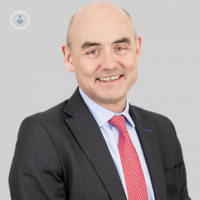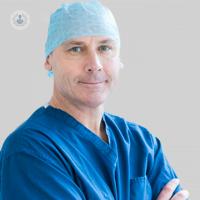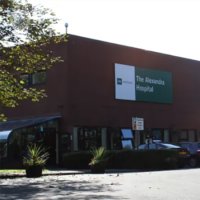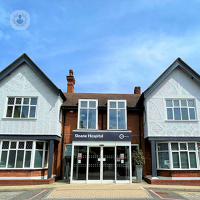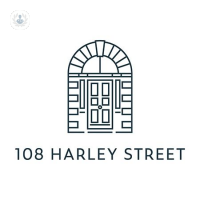What is mastopexy?
Mastopexy, or breast lift, is a form of plastic surgery that raises sagging breasts in order to correct ptosis. Throughout a woman’s life, her breasts will naturally sag as she ages, as breasts lack muscle tissue, meaning they cannot be strengthened. While it is not necessary to correct natural sagging, some women choose to in order to restore volume and fullness to the breasts.

Why is mastopexy performed?
Mastopexy is performed to correct sagging breasts, which can occur as a result of gravitational pull, ageing (as fat and tissue decrease in the breasts), pregnancy, or weight loss. Smoking and sunburn can also affect the elasticity of the breasts. Sagging can occur in both large and small breasts. While sagging breasts do not affect physical health, they may affect self-esteem, and as a result women may wish to have the ptosis corrected.
What happens during mastopexy?
During the mastopexy procedure, your surgeon makes several cuts on the breasts, depending on the technique that they are using. Skin can be removed from around the areola, and from under the breasts, or only one area. The breast is then reshaped, making it ‘tighter’, and the nipples are repositioned, with the areola being reshaped on some occasions to fit the new breast size.
Sometimes breast implants can be inserted during the same procedure, in order to perform a breast uplift and enlargement.
How to prepare for mastopexy
At consultations before your breast lift surgery, your surgeon will assess your breasts and take photographs for records. They will assess the size and position of your nipples and mark where the cuts will be made. They will discuss what you want to achieve from the procedure in-depth.
Before undergoing a mastopexy, your surgeon will explain what you must do in preparation. If you smoke, you will be asked to stop at least six weeks before the operation, as smoking increases the risk of infection and slows recovery.
You will be advised not to eat or drink anything for about six hours before the operation. The procedure is performed under general anaesthesia.
Post-operative care
After breast lift surgery, you’ll need to:
- Wear a suitable bra (elastics, without underwire and with adjustable straps) and a bandage for a month
- Remove the bra only for showering
- Not wear an underwire bra for several months after the intervention
- Massage the area to reduce inflammation (if recommended by the specialist)
- Avoid lifting heavy things, strenuous exercises and sudden movements
Your surgeon will also give you advice on mastopexy aftercare and how to clean the wound. Speak to your specialist if you have any questions or worries after the procedure.
11-13-2012 05-04-2023Breast lift or mastopexy
Professor Andrew Baildam - Surgery
Created on: 11-13-2012
Updated on: 05-04-2023
Edited by: Conor Dunworth
What is mastopexy?
Mastopexy, or breast lift, is a form of plastic surgery that raises sagging breasts in order to correct ptosis. Throughout a woman’s life, her breasts will naturally sag as she ages, as breasts lack muscle tissue, meaning they cannot be strengthened. While it is not necessary to correct natural sagging, some women choose to in order to restore volume and fullness to the breasts.

Why is mastopexy performed?
Mastopexy is performed to correct sagging breasts, which can occur as a result of gravitational pull, ageing (as fat and tissue decrease in the breasts), pregnancy, or weight loss. Smoking and sunburn can also affect the elasticity of the breasts. Sagging can occur in both large and small breasts. While sagging breasts do not affect physical health, they may affect self-esteem, and as a result women may wish to have the ptosis corrected.
What happens during mastopexy?
During the mastopexy procedure, your surgeon makes several cuts on the breasts, depending on the technique that they are using. Skin can be removed from around the areola, and from under the breasts, or only one area. The breast is then reshaped, making it ‘tighter’, and the nipples are repositioned, with the areola being reshaped on some occasions to fit the new breast size.
Sometimes breast implants can be inserted during the same procedure, in order to perform a breast uplift and enlargement.
How to prepare for mastopexy
At consultations before your breast lift surgery, your surgeon will assess your breasts and take photographs for records. They will assess the size and position of your nipples and mark where the cuts will be made. They will discuss what you want to achieve from the procedure in-depth.
Before undergoing a mastopexy, your surgeon will explain what you must do in preparation. If you smoke, you will be asked to stop at least six weeks before the operation, as smoking increases the risk of infection and slows recovery.
You will be advised not to eat or drink anything for about six hours before the operation. The procedure is performed under general anaesthesia.
Post-operative care
After breast lift surgery, you’ll need to:
- Wear a suitable bra (elastics, without underwire and with adjustable straps) and a bandage for a month
- Remove the bra only for showering
- Not wear an underwire bra for several months after the intervention
- Massage the area to reduce inflammation (if recommended by the specialist)
- Avoid lifting heavy things, strenuous exercises and sudden movements
Your surgeon will also give you advice on mastopexy aftercare and how to clean the wound. Speak to your specialist if you have any questions or worries after the procedure.


Breast implants vs. breast uplift
By Mr Navid Jallali
2024-11-21
Breast enhancement surgery is the UK’s most popular aesthetic surgical procedure with over 13,000 operations carried out per year. Breast enhancement surgery can come in the form of implants, breast uplift (mastopexy) or a combination of both (augmentation mastopexy), but which of these is best for you? Expert consultant plastic surgeon Mr Navid Jallali MD FRCS (Plast) is here with some information and advice about these procedures. See more


The 5 incision techniques of breast augmentation
By Mr Haresh Devalia
2024-11-21
Surgeons typically choose one of five ways to insert breast implants and each provides slightly different results depending on the patient’s anatomy and desired outcome. Mr Haresh Devalia discusses these five incisions techniques and also covers scarring, implant materials and recovery time. See more
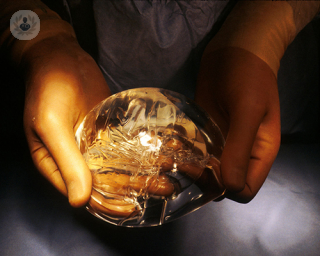

How long do breast implants last?
By Mr Venkat Ramakrishnan
2024-11-20
Breast implants are a popular cosmetic treatment, but do they last forever? Leading plastic surgeon Mr Venkat Ramakrishnan is here to explain and gives his recommendations for which implants to choose. See more


All you need to know about breast implant removal
By Ms Shweta Aggarwal
2024-11-20
Here, Ms Shweta Aggarwal, a well-regarded and highly experienced consultant oncoplastic surgeon, discusses breast implant removal surgery at length, including the main reasons for the removal of breast implants. See more
Experts in Breast lift or mastopexy
-
Mr Abdul Kasem
SurgeryExpert in:
- Breast cancer
- Benign breast lumps
- Breast reconstruction
- Breast augmentation
- Breast reduction
- Breast lift or mastopexy
-
Mr Kelvin Ramsey
Plastic surgeryExpert in:
- Breast reconstruction
- Breast augmentation
- Breast lift or mastopexy
- Tummy tuck (abdominoplasty)
- Breast reduction
- Skin cancer
-
Mr Paul Harris
Plastic surgeryExpert in:
- Breast reduction
- Breast augmentation
- Breast lift or mastopexy
- Breast implant removal surgery
- Gynaecomastia
- DIEP breast reconstruction
-
Mr Matthew James
Plastic surgeryExpert in:
- Facial plastic surgery
- Blepharoplasty
- Breast augmentation
- Breast lift or mastopexy
- Facelift
- Tummy tuck (abdominoplasty)
-
Professor Andrew Baildam
SurgeryExpert in:
- Breast reconstruction
- Breast fat transfer
- Breast cancer surgery
- Breast lift or mastopexy
- Breast reduction
- Breast surgery
- See all

The Alexandra Hospital - part of Circle Health Group
The Alexandra Hospital - part of Circle Health Group
Mill Ln, Cheadle
No existe teléfono en el centro.
By using the telephone number provided by TOP DOCTORS, you automatically agree to let us use your phone number for statistical and commercial purposes. For further information, read our Privacy Policy
Top Doctors

The Sloane Hospital - part of Circle Health Group
The Sloane Hospital - part of Circle Health Group
125 Albemarle Rd, Beckenham BR3 5HS
No existe teléfono en el centro.
By using the telephone number provided by TOP DOCTORS, you automatically agree to let us use your phone number for statistical and commercial purposes. For further information, read our Privacy Policy
Top Doctors

108 Harley Street Medical
108 Harley Street Medical
108 Harley Street
No existe teléfono en el centro.
By using the telephone number provided by TOP DOCTORS, you automatically agree to let us use your phone number for statistical and commercial purposes. For further information, read our Privacy Policy
Top Doctors
-
The Alexandra Hospital - part of Circle Health Group
Mill Ln, Cheadle, CheadleExpert in:
- Hip
- Cardiology
- Shoulder and elbow
- Paediatrics
- Foot and ankle
- Knee
-
The Sloane Hospital - part of Circle Health Group
125 Albemarle Rd, Beckenham BR3 5HS , South LondonExpert in:
- Abdominal ultrasound
- Vascular Surgery
- Cardiology
- Colorectal surgery
- Endocrine Surgery
- General Surgery
-
108 Harley Street Medical
108 Harley Street, W1G Marylebone LondonExpert in:
- Vascular Surgery
- Dermatology
- Diagnostic Imaging
- Women’s health
- Sports Medicine
- Rehabilitation
- See all
- Most viewed diseases, medical tests, and treatments
- Migraine
- Weight loss injections
- Nipple discharge
- Abdominal pain
- Endovenous laser treatment (EVLA)
- Minimal access surgery (keyhole surgery)
- Head and neck cancer
- Neck lump
- Bariatric surgery
- Acellular dermal matrix (ADM)



